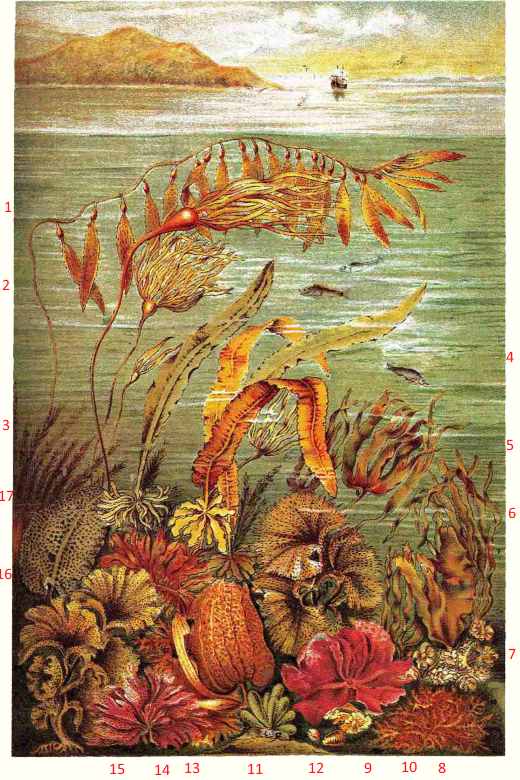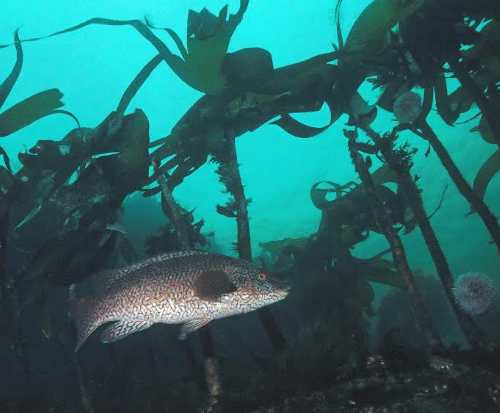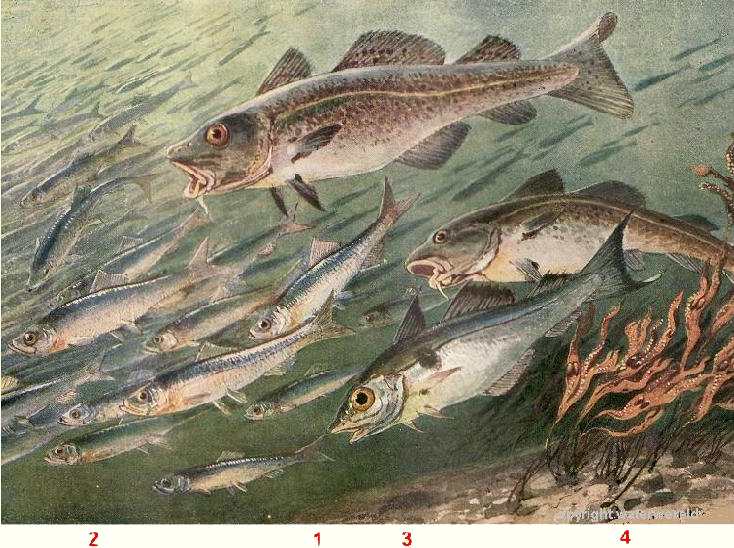dabberlocks
Dabberlocks are brown algae that belong to the large family of
Alariaceae of the order of the kelps or Laminariales.
They can be found on wave-exposed rocky shores around the North sea.
Dabberlocks are also part of kelpforest in the North Atlantic regions.
This up to 4 meter long seaweed was once used as a fodder for cattle and fertilizer for plants.

1 giant kelp or macrocystis pyrifera,
2 edible kelp, bull kelp or Nereocystis luetkeana.
3 dragon Kelp or Eualaria fistulosa or alaria fistulosa
4 dabberlocks or Irish wakame or alaria esculenta
5 oarweed or Laminaria digitata
6 sea belt or Devil's apron or Laminaria saccharina or Saccharina latissima
7 Cup and saucer or Constantinea rosa-marina
8 Odonthalia corymbifera
9 Turnerella mertensiana
10 Dumontia Hydrophora
11 Red islet silk or Sparlingia pertusa
12 Agarum clathrus;
13 Costaria costata
14 bladderwrack or fucus vesiculosus
15 dulse or palmaria palmata
16 Agarum clathratum or fucus agarum
17 Landlady's wig, Sea sorrel or Desmarestia aculeata
dabberlocks
The color changes: its green in the spring and becomes yellow brown in the sunmmer:
But the color is very variable: it can be darkgreen or almost black.
adaptations to a low level light
Dabberlock are adapted to live in muddy water or places with low light:
The amount of fingers depend on the clearness of the water:
in trouble water there are only a few fingers.
In deep water (up to 30 meter deep) the blades become very thin and almost transparant.
dabberlocks are edible
Dabberlocks can be eaten fresh or used as a dried powder:
In spring the green leaves are small: this is the best time to pick to leaves to be eaten freshly.
Dabberlocks dried
Dabberlocks are harvested in summer to be dried. First they are cut in ribbons (the vingers ).
Then dried in sun and wind: They must be drywithin one day!.
Dont store while they are still wet.
It is important to leave the holdfast intact and 20 cm of the stip: the dabberlock will regenerate and can be harvested again. 
A large (male) Ballan wrasse, Labrus bergylta, under a canopy of dabberlocks in the North sea. To right down two sea urchins can be seen, clibbing up and down the stalk. They feed on the leaves and on the "Aufwuchs", algae that are attached to blades of the dabberlocks.
A beautiful foto made by Jim Greenfield .
Kelpforests in the Atlantic
On shallow coast with a rock bottom kelpforest grow. These kelp forests consist of large seaweeds and
give shelter to many small fishes and other sea creatures.
Kelp is 50 times more productive as oceanic phytoplankton. The kelpforests near the the European coasts consist mainly of laminaria species, some of them reach great lengths, like cuvie or Laminaria hyperborea. Lamineria hyperborea is the most common seaweed in the North Atlantic region, and reaches a length of 5 meter. Other common species are dabberlocks or Alaria esculenta, sugar kelp or Laminaria saccharina and oarweed or Laminaria digitata. Alaria esculenta will grow in the lower parts of the kelp forest as the bladderlocks can grow with only a very limited amount of sunlight.
Vijanden van de kelpbossen
The sea urchin is the most important enemy of the kelpforest,
they feed on the shoots and leaves of the seaweeds.By removing their most important predators the sea urchin their numbers have increased and kelpforests are dissapearing from the North sea.
Predators are the European hommer who feeds on adult sea urchin and Atlantic cod that feeds on young sea urchins.

A painting made by Heinrich Harder, 1880.
1 Atlantic cod
2 Atlantic herring
3 haddock
4 dabberlocks